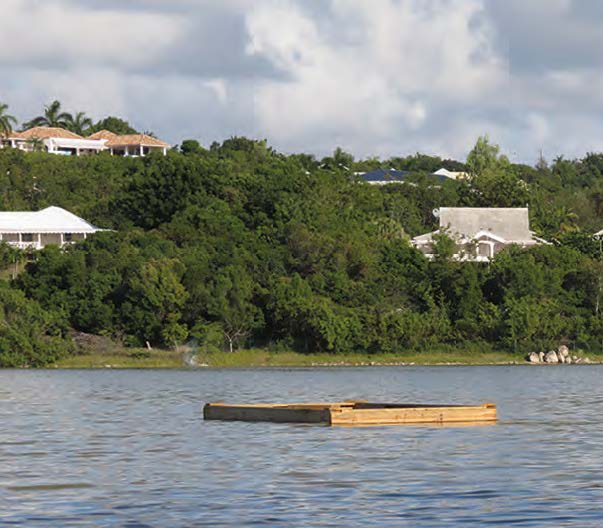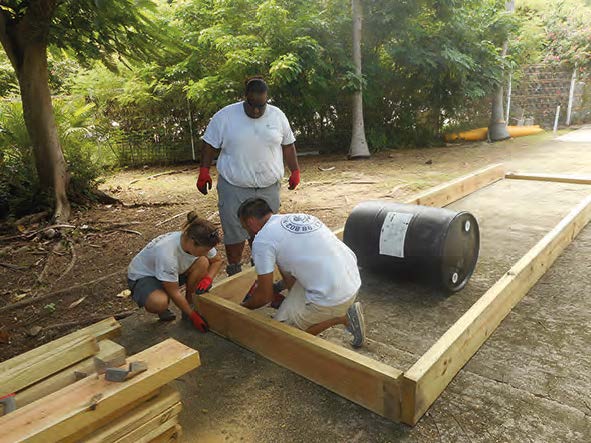In mid-October, the Réserve placed a raft in the water of the Grand Étang, in Terres Basses, in order to encourage resting and nesting for least terns, of which there are 75 on the site this year.
The idea is to protect this migratory bird, a species whose conservation status is «endangered» on a world level and «vulnerable» on the local level. Very sensitive to disturbances, the least tern makes its nest along the edge of the salt ponds, on the sand, and its eggs and not protects from a sudden rise in water levels or a hungry rat or dog. This would no longer be the case if the birds lay their eggs on the raft, out in the middle of the pond. This process exists elsewhere but this is a first for Saint Martin, and the Réserve is crossing its fingers that the birds will quickly adopt this new space. That could take more or less time, such as in the Camargue, where it took three years for the birds to finally nest on their raft. Six meters long and three meters wide, this floating structure is anchored in the pond and designed for the comfort of the birds: the bottom is covered with gravel and caches are available in the interior so that the baby birds can be protected from the elements. The Les residents of Terres Basses were receptive to this project once it was presented to them by the Réserve, and they are going to participate in its financing along with the Réserve and the Fondation du Patrimoine. The staff at the Réserve built the raft, as conceived and designed by Caroline Fleury, director of the land and lakes milieu study, supervised by Julien Chalifour and the scientific department of the Réserve.


















